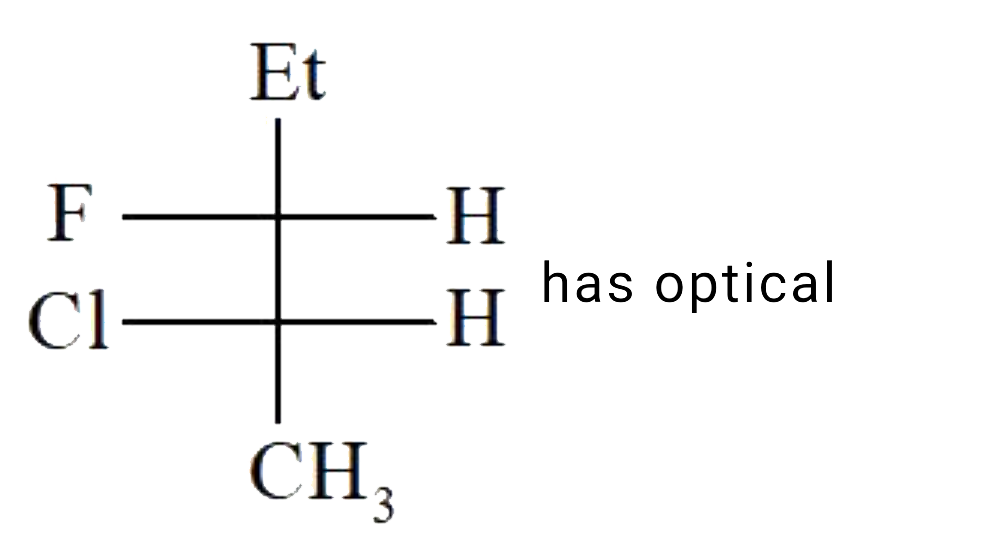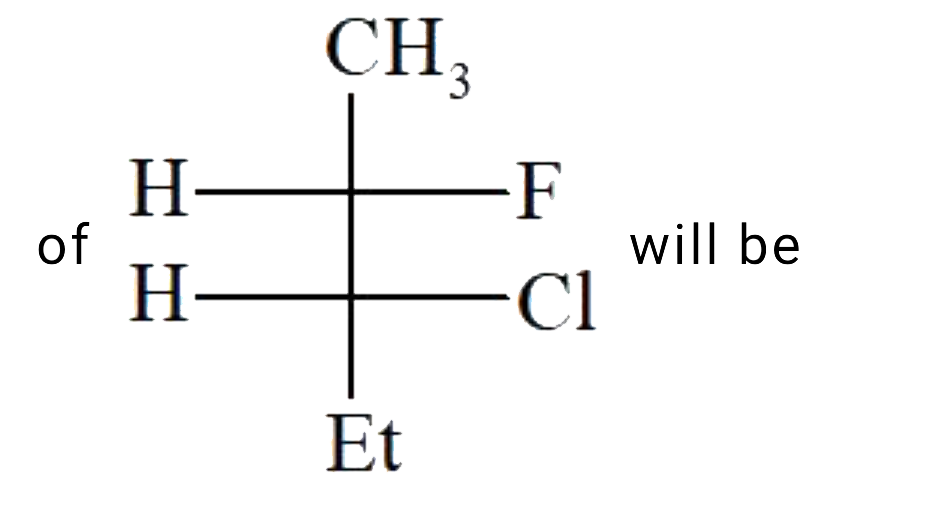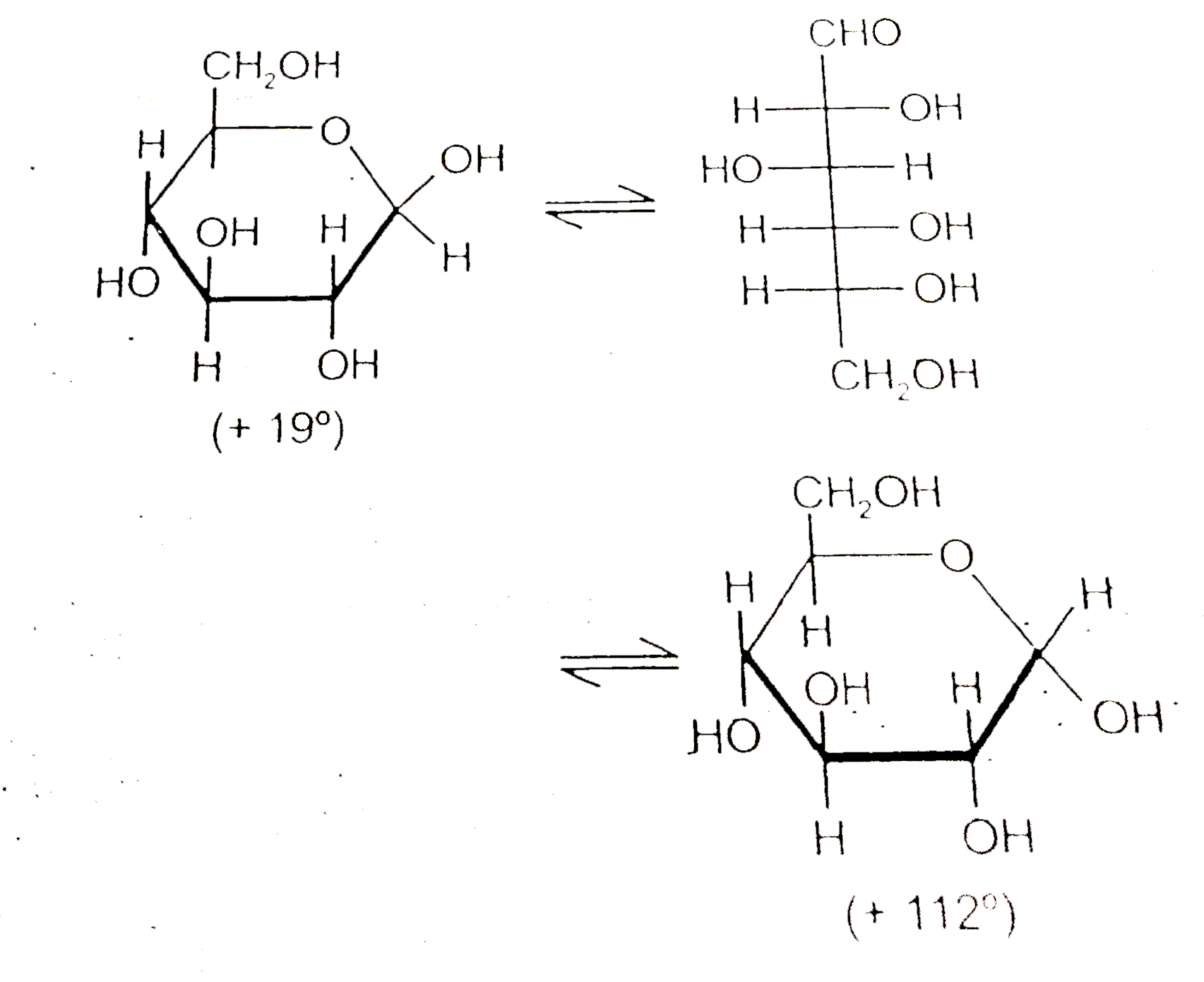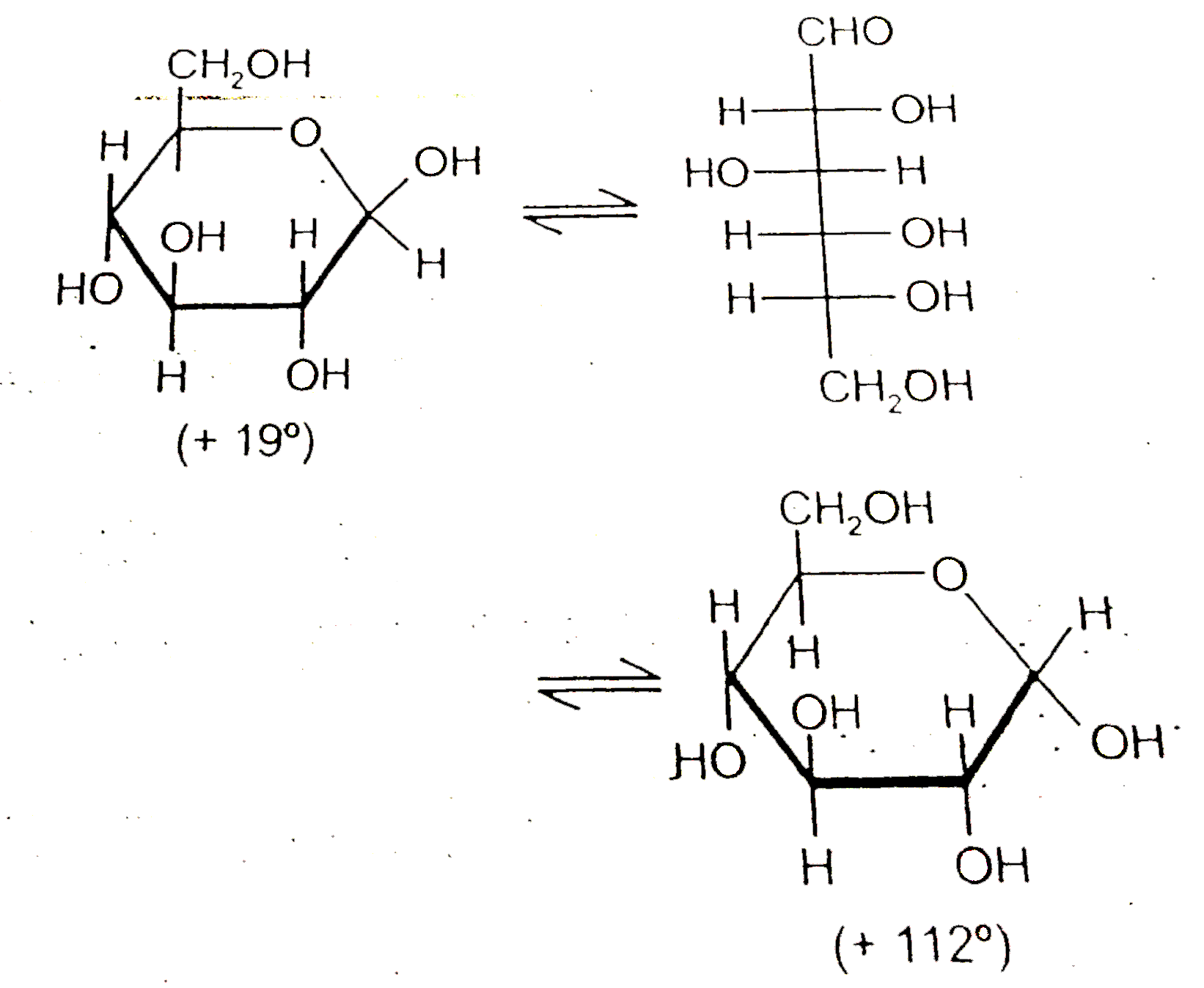
rotation −45∘, so optical rotation of

+45∘
0∘
−45∘
can not be predicted
The correct Answer is:D
Step by step video, text & image solution for rotation -45^(@), so optical rotation of by Chemistry experts to help you in doubts & scoring excellent marks in Class 12 exams.
Updated on:21/07/2023Topper's Solved these Questions
Similar Questions
An organic compound P exists in two enantiomeric forms, which have specific optical rotation values [α]=±100∘. The optical rotation of a mixture of these two enantiomers is −50∘. Calculate the percentage of that enantiomer which is in lower concentration in the mixture.
View SolutionWhen either form of D-Glucose is dissolved In water, the solution gradually changes its optical rotation and finally attains a constant optical rotation of +52∘.

Which of the following statements, is true?
View Solution
Knowledge Check
A 20cm length of a certain solution causes right-handed rotation of 38∘. A 30cm length of another solution causes left-handed rotation of 24∘. The optical rotation caused by 30cm length of a mixture of the above solutions in the volume ratio 1:2 is
A(a) Left handed rotation of 14∘B(b) Right handed rotation of 14∘C(c) Left handed rotation of 3∘D(d) Right handed rotation of 3∘The optical rotation of the α-form of a pyranose is +150.7∘, that of the β-form is +52.8∘. In solution an equilibrium mixture of these anomers has an optical rotation of +80.2∘. The precentage of the α-form in equilibrium mixture is :
A28%B32%C68%D72%Compound which rotates the plane polarised light is known as optically active compound . On the basis of direction of rotation two forms of an optically active compounds are termed as dextro and laevo rotatory . The two are termed as enantiomers . If we have a 1 : 1 mixture of d and l isomers of a given chiral compound , optical rotation of such mixture is zero Such a mixture is optically inactive and is called a recemic modification.
The net specific rotation of any mixture of the d and isomers of a given chiral compound is equal to the weighted average of the rotations due to both the isomers Mathematically if can be expressed as :
[α]≠t=fd[αd]+f1[αl]
Where fa and fl are fractions of d and l isomers respectively and [αd],[αl] are their specific rotations
What is the enantiomeric excess in any pure sample of an optically active substance ?A0.5B1C0DDepends upon the specific rotation
When either form of D-Glucose is dissolved In water, the solution gradually changes its optical rotation and finally attains a constant optical rotation of +52∘.

Which form of D-GIucose is more stable?
View SolutionWhen either form of D-Glucose is dissolved In water, the solution gradually changes its optical rotation and finally attains a constant optical rotation of +52∘.

What is the percentage of open chain D-Glucose in solution?
View SolutionA 300 mm long tube containing 60 cm3 of sugar solution produces an optical rotations of 10∘ when placed in a saccharimeter. If specific rotation of sugar is 60∘ calculate the quantity of sugar constained in te tube solution.
View SolutionThe specific optical rotations of pure a- and b-D-mannopyranose are + 29.3° and -17.0, respectively. When either form is dissolved in water, specific optical rotation of the equilibrium mixture is found to be + 14.2°. Calculate the percentage of a anomer at equilibrium.
View SolutionCompound which rotates the plane polarised light is known as optically active compound . On the basis of direction of rotation two forms of an optically active compounds are termed as dextro and laevo rotatory . The two are termed as enantiomers . If we have a 1 : 1 mixture of d and l isomers of a given chiral compound , optical rotation of such mixture is zero Such a mixture is optically inactive and is called a recemic modification.
The net specific rotation of any mixture of the d and isomers of a given chiral compound is equal to the weighted average of the rotations due to both the isomers Mathematically if can be expressed as :
[α]≠t=fd[αd]+f1[αl]
Where fa and fl are fractions of d and l isomers respectively and [αd],[αl] are their specific rotations
Which of the following molecule can resolved into enantiomers ?
View Solution
